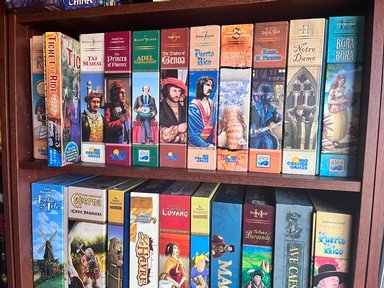
Match the Board Game Trivia Quiz
You will find three words on the left hand side that will act as clues to some of my favorite (and most popular) board games. Enjoy the quiz :)
A matching quiz
by dim_dude.
Estimated time: 3 mins.
- Home
- »
- Quizzes
- »
- Hobbies Trivia
- »
- Games & Toys
- »
- Board Games